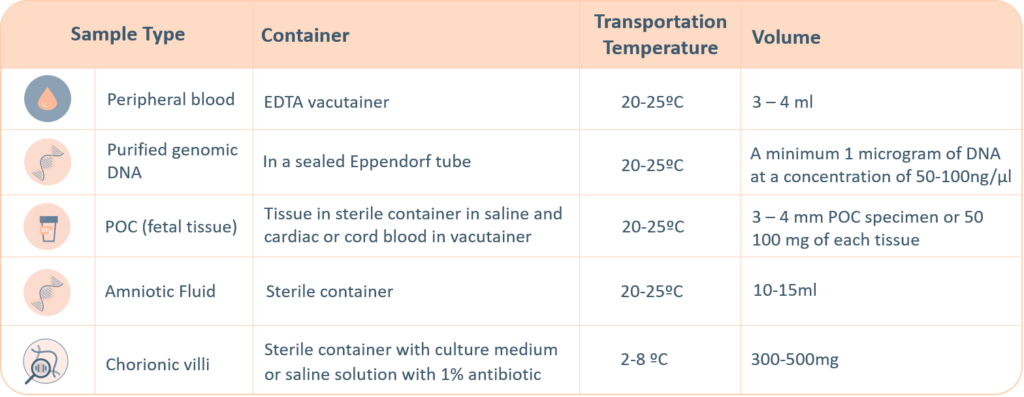Overview
- Ectodermal Dysplasias (EDs) are a heterogeneous group of approximately 200 inherited disorders characterized by anomalies in at least two of the structures derived from embryonic ectoderm, with at least one involving skin appendages (hair, nails, sweat glands). Other tissues that can be involved include mammary glands, adrenal medulla, central nervous system, inner ear etc. Eds are congenital, diffuse and nonprogressive. Ectodermal dysplasias caused by genetic mutations include hypohidrotic ED, hypohidrotic ED with immune deficiency and hidrotic ED, the most common being X-linked recessive hypohidrotic ectoderma dysplasia, also known as Christ-Siemens-Touraine syndrome. Morbidity and mortality is related to the absence or dysfunction of eccrine and mucous glands. Beyond early childhood, life expectancy ranges from normal to slightly reduced.
- The Igenomix Ectodermal Dysplasias Precision Panel can be used to make an accurate and directed diagnosis ultimately leading to a better management and prognosis of the disease. It provides a comprehensive analysis of the genes involved in this disease using next-generation sequencing (NGS) to fully understand the spectrum of relevant genes involved.
Indication
- The Igenomix Ectodermal Dysplasias Precision Panel is indicated for those patients with a clinical suspicion or diagnosis with or without the following manifestations:
- Hyperthermia with fever and seizures
- Decreased tears (xerophthalmia) and conjunctivitis
- Deficient hearing or vision
- Decreased saliva (xerostomia) and frequent dental caries
- Developmental delay
- Dysphagia
- Growth failure
- Frequent upper respiratory tract infections
Clinical Utility
The clinical utility of this panel is:
- The genetic and molecular confirmation for an accurate clinical diagnosis of a symptomatic patient.
- Early initiation of multidisciplinary treatment in the form of medical care encouraging protective hydrating routines, dental evaluation and antibiotic treatment to prevent complications. Surgical care may be needed.
- Risk assessment and genetic counselling of asymptomatic family members according to the mode of inheritance.

References
Visinoni, Á., Lisboa-Costa, T., Pagnan, N., & Chautard-Freire-Maia, E. (2009). Ectodermal dysplasias: Clinical and molecular review. American Journal Of Medical Genetics Part A, 149A(9), 1980-2002. doi: 10.1002/ajmg.a.32864
Pagnan, N., & Visinoni, Á. (2014). Update on ectodermal dysplasias clinical classification. American Journal Of Medical Genetics Part A, 164(10), 2415-2423. doi: 10.1002/ajmg.a.36616
Freire-Maia, N., Lisboa-Costa, T., & Pagnan, N. (2001). Ectodermal dysplasias: How many?. American Journal Of Medical Genetics, 104(1), 84-84. doi: 10.1002/ajmg.1586
Priolo, M. (2001). Ectodermal dysplasias: a new clinical-genetic classification. Journal Of Medical Genetics, 38(9), 579-585. doi: 10.1136/jmg.38.9.579
Wright, J., Fete, M., Schneider, H., Zinser, M., Koster, M., & Clarke, A. et al. (2019). Ectodermal dysplasias: Classification and organization by phenotype, genotype and molecular pathway. American Journal Of Medical Genetics Part A, 179(3), 442-447. doi: 10.1002/ajmg.a.61045
Itin, P., & Fistarol, S. (2004). Ectodermal dysplasias. American Journal Of Medical Genetics, 131C(1), 45-51. doi: 10.1002/ajmg.c.30033




